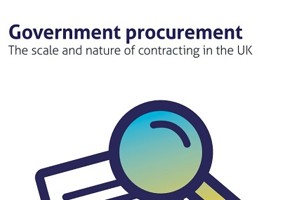The 2019 edition of NCVO’s UK Civil Society Almanac, published today, reveals that the charity sector’s growth slowed in 2016/17. The Almanac is compiled using a sample of around 8,000 charities’ annual reports, aggregated and weighted to match the sector. It is the authoritative resource for information on the voluntary sector’s finances and is used by the Office for National Statistics in calculating charities’ contribution to national accounts. Here is a brief look at some of this the latest report’s key findings.
Total income for the sector has grown but more slowly than in previous years
The sector’s income grew two per cent to £50.6bn in 2016/17. This growth rate is slightly lower than in the last three years where income had grown by between three and six per cent. Income only grew for bigger organisations but decreased for micro, small and medium organisations compared to the previous year.
The public and government remain by far the largest income sources, however, both of them plateaued. Total income growth was instead driven by increases in grants (£588.8m) and investments (£602.6m). Rising investment income for some of the largest grant-making foundations meant that spending on grants was up by five per cent reaching a new record high of £7bn. The majority of this (57 per cent) went back to other voluntary organisations. (It’s worth noting that one third of the increase in grants was due to one donation alone: In 2017, the Trinity Trust gifted a total of £200m to the Steve Morgan Foundation. Although we publish the Almanac annually, events such as these are a reminder of the limitations of single-year comparisons.)
Income from the public is showing signs of change
The public continued to be the largest income source, accounting for almost half (45 per cent) of the sector’s income. For the first time in six years, there was a fall in earned income from the public, that is, income generated through fees paid for goods and services, membership subscriptions, or sales from charity shops. At the same time, donations fell slightly by two per cent from the previous year although legacy income continued to rise. Although we have seen continued growth of legacy income, it’s worth noting that this does not benefit charities equally: Smaller organisation are least likely to receive income from legacies.
Reasons for falling donations are complex
While some were quick to link the drop in donations with diminished trust in voluntary organisations, other factors should not be overlooked. The recent CAF UK Giving report showed that the overall amount for donations remained static but fewer people were giving. Notably, they also found that the proportion of people who were not asked to give had gone up from 25 per cent in 2016 to 27 per cent in 2018 and fewer people were seeing TV appeals or receiving direct marketing. Following GDPR, many voluntary organisations have updated their supporters’ databases, with occasional or lapsed donors the supporters most likely to have been removed. Although we do not know whether they have had an effect, it’s worth considering the rise of fundraising platforms and individuals asking directly for support, removing the role of voluntary organisations as an intermediary, trusted or otherwise.
Income from government has plateaued but fallen as a proportion of total income
Government remains the second largest income source totalling £15.8bn. Over the last four years the amount of income from government has remained fairly stable, but it has fallen as a proportion of total income. It made up 37 per cent of the total income in 2009/10 but dropped to 31 per cent in 2016/17 as other sources grew.
Assets continued to grow marking a new record high
The sector’s net assets grew by four per cent to £131.2bn in 2016/17, marking a new record high. The continued growth is mainly a result of strong investment performance. Total liabilities were up by 12 per cent reaching their highest levels with most of this due to rising pensions across organisations of all sizes. Both government changes to workplace pensions bringing in automatic enrolment and a new reporting standard for charities have contributed to the growth in pensions. The level of reserves remained stable, on average voluntary organisations hold reserves of around six months of spending (excluding grant-making foundations).
Lisa Hornung is senior data and research analyst at NCVO
|
Related articles











